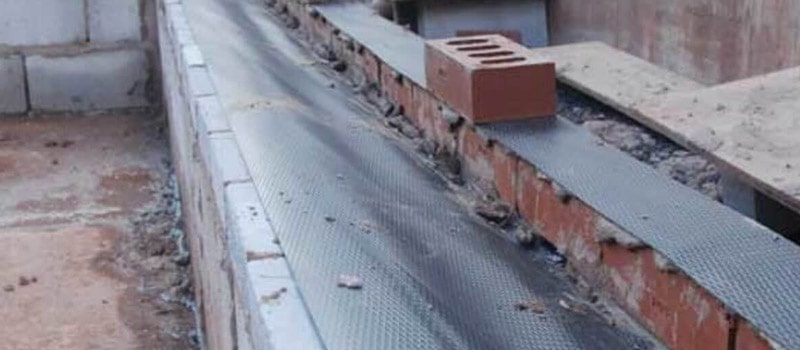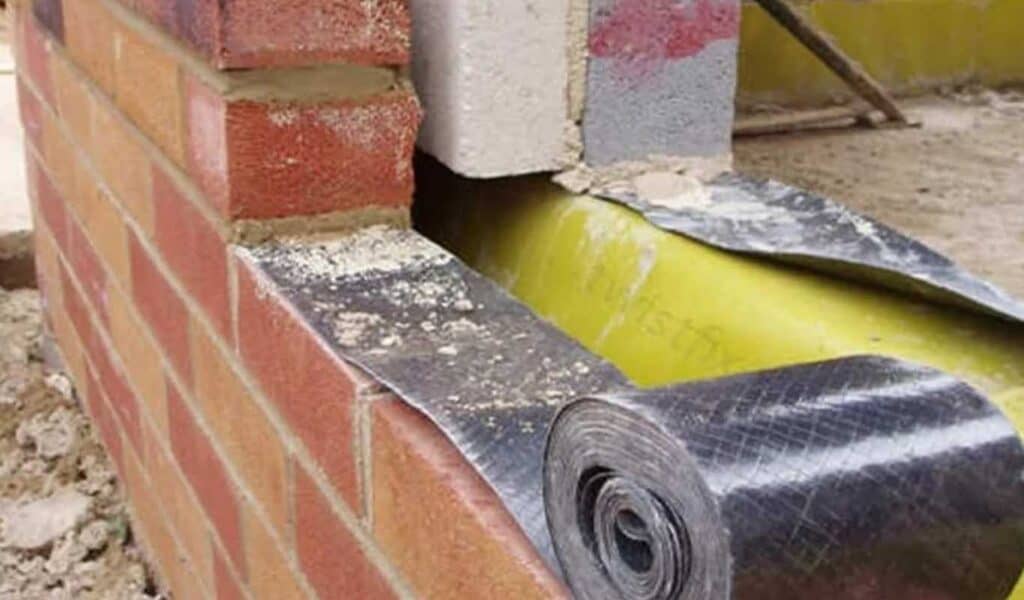The inclusion of a damp proof course (DPC) in a building’s structure is crucial as it serves the purpose of safeguarding against the infiltration of moisture into the walls and foundation. Dampness can cause various issues, such as structural damage, health issues, unpleasant odours, decreased energy efficiency, and damage to furnishings and decor.
DPCs are typically installed during building construction or as part of a renovation project to protect the building from moisture and its associated problems. Various materials can be used for DPCs, such as slate, bituminous felt, polyethylene sheeting, and siliconates or silanes. In this way, damp-proof courses help ensure that buildings are structurally sound, safe, and comfortable.
Benefits of a Damp Proof Course
- DPCs prevent rising dampness in a building, which can cause structural damage, unpleasant odours, and an unhealthy living environment.
- DPCs prevent moisture from reaching timber, protecting it from rot and decay, and maintaining the structural integrity of the building.
- DPCs prevent moisture from entering the building, maintain a stable temperature, and improve energy efficiency.
- DPCs prevent mould and mildew growth, improving indoor air quality and preventing harmful spores from being released into the air.
- DPCs prevent damage to plaster and paint, reducing the need for costly maintenance and repairs.
What if You Don’t Install a DPC?
- Rising dampness can weaken the structural integrity of a building, resulting in cracking and crumbling of the walls, as well as damage to the foundation.
- Dampness can create a breeding ground for mould and mildew, releasing spores into the air that can harm human health, resulting in respiratory problems, allergies, and other health issues.
- Dampness can create a musty smell in a building that can be unpleasant and difficult to remove.
- Dampness can make it more difficult to heat or cool the space, resulting in increased energy usage and higher energy bills.
- Dampness can cause damage to furnishings and decor, including the warping of wood, discolouration of fabrics, and peeling of wallpaper and paint.

Different Types of Damp Proof Courses
Physical DPC:
This type of DPC is a physical barrier installed in the walls to prevent moisture from rising. It can be made from various materials, such as slate, bituminous felt, or polyethylene sheeting. Physical DPCs are usually installed horizontally, typically 150mm to 300mm above ground level. They can also be installed vertically, especially in walls that are thicker than usual, to prevent moisture from moving laterally. Physical DPCs are the most commonly used type of DPC and are usually installed during construction.
Chemical DPC:
This type of DPC is installed by injecting a chemical solution into the walls. The solution then forms a barrier that prevents moisture from rising. Chemical DPCs are typically made from siliconates or silanes and are effective in brick and stone walls. This type of DPC is often used in older buildings where a physical DPC cannot be installed or in situations where installing a physical DPC would be too disruptive or expensive.
Cavity Wall DPC:
This type of DPC is installed in the cavity between two layers of masonry. It is typically made from polythene sheeting or similar material, and it prevents moisture from passing from the outer leaf of masonry to the inner leaf. This type of DPC is commonly used in cavity wall construction.
Electro-Osmotic DPC:
This type of DPC is installed using an electrical current to repel water molecules and prevent moisture from rising. Electro-osmotic DPCs are usually used in cases where other types of DPC are unsuitable, such as in listed buildings. They are also used when access to the wall is limited and installing a physical DPC would be difficult or impossible.
Flashed DPC:
This type of DPC is used where a wall meets a roof or another structure. It is typically made from lead or similar material, and it prevents moisture from entering the wall at the junction. Flashed DPCs are commonly used in roof construction and can be installed during construction or retrofitted in existing buildings.

Different DPC Materials
Slate:
Slate is a natural material used in building construction for centuries. It is often used in physical DPCs because it is durable, long-lasting, and an effective barrier against moisture. Slate DPCs are installed by cutting a thin slate strip and laying it into the mortar joint between the bricks.
Bituminous Felt:
Bituminous felt is a synthetic material made from bitumen and cellulose. It is often used in physical DPCs because it is easy to install and provides an effective barrier against moisture. The felt is usually cut into strips and laid into the mortar joint between the bricks.
Polyethylene Sheeting:
Polyethylene sheeting is a type of plastic sheeting that is commonly used in cavity wall DPCs. It is flexible and easy to install, providing an effective barrier against moisture. The sheeting is usually cut to the correct size and inserted into the cavity between the bricks.
Siliconates or Silanes:
Siliconates and silanes are chemicals that are used in chemical DPCs. They are applied to the walls in liquid form and react with the wall to form a barrier that prevents moisture from rising. Siliconates and silanes are often used when installing a physical DPC is difficult or impossible.
Lead:
Lead is a metal that is commonly used in flashed DPCs. It is durable, long-lasting, and provides an effective barrier against moisture. Lead DPCs are installed by cutting a thin lead strip and laying it into the mortar joint between the bricks.
PVCu:
PVCu is a plastic type commonly used in cavity wall DPCs, and it is lightweight, durable, and easy to install. PVCu DPCs are usually formed into a profile inserted into the cavity between the bricks.
Stainless Steel:
Stainless steel can be used in flashed DPCs; it is strong, durable, and corrosion-resistant. Stainless steel DPCs are installed by cutting a thin stainless steel strip and laying it into the mortar joint between the bricks.
Damp-Proof Membranes:
Damp-proof membranes are pre-formed sheets made from various materials, such as bitumen or PVC, that can be used as a physical DPC. They are easy to install and provide an effective barrier against moisture. Damp-proof membranes are usually cut to size and laid into the mortar joint between the bricks.



